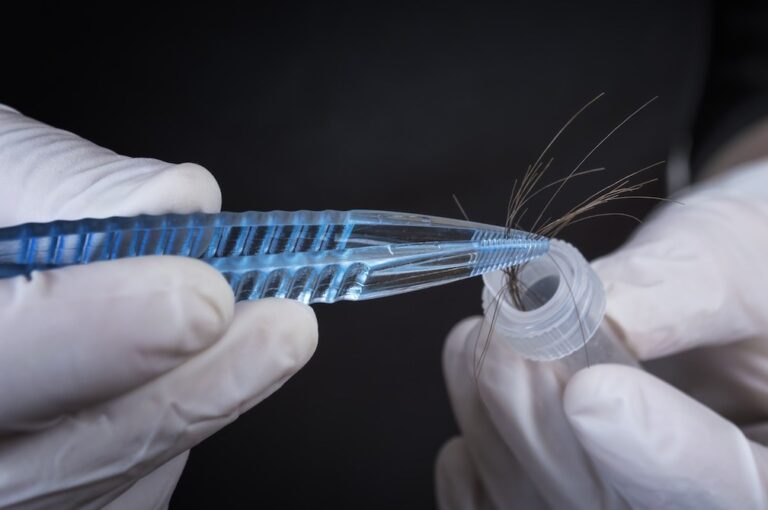As pretty much anyone in the trucking industry would agree, it’s important to ensure commercial drivers are alert and prepared to react quickly to changing conditions. Keeping drivers with a record of operating under the influence of alcohol or controlled substances off the road is a logical precaution.
The creation and implementation of the Federal Motor Carrier Safety Administration’s (FMCSA) Drug and Alcohol Clearinghouse marked a major step forward in ensuring positive tests for controlled substances are recorded and available to carriers as a part of the background check on potential company drivers and independent contractors.
In addition, the Clearinghouse provides regular updates that include nationwide statistics on drug and alcohol testing. As of March 2024, Clearinghouse statistics show that 239,929 drivers have at least one violation on their record. Out of those drivers, only 74,060 (30.9%) have completed the return-to-duty (RTD) process. In fact, the majority of those nearly 240,000 drivers — 126,000, or 52.5% — never even began the RTD process. Whether drivers placed out of service for substance violations complete the RTD process or choose to leave the industry, there’s little doubt that the Clearinghouse rules are helping get drug users out from behind the wheel of commercial vehicles.
The statistics show the program is having an impact. Because of this proven success, members of the Trucking Alliance, a group of some of the largest and safest carriers in North America, say they’re frustrated with the government’s apparent unwillingness to consider a set of significant statistics submitted in a request to change the rules for controlled substance testing to allow testing of hair samples. The group, which represents carriers running more than 70,000 trucks, is pushing for the inclusion of hair testing as an approved method of FMCSA controlled substance testing and asking that results be included in the Clearinghouse.
Trucking Alliance members have been utilizing hair testing, in addition to the approved urine testing, for pre-employment and random drug tests for years. In June 2023, the Alliance released a statement outlining statistics supporting the use of hair testing, as revealed by a study conducted at the University of Central Arkansas (UCA). The study, which analyzed both urine and hair testing results from nearly 1 million commercial drivers taken between 2017 and 2022, showed that hair testing produced nine times as many positive results as urine testing.
“I don’t see how anyone can reasonably argue with these drug test results, given the large disparity in positivity rates between hair and urine testing for every drug and a sample of almost 1 million drug tests,” said Dr. Doug Voss, one of the UCA researchers, in the release. “At some point it’s like arguing whether the sun will rise tomorrow.”
The Alliance had used similar statistics in an application for an exemption to FMCSA regulations requiring urine testing, asking that they be allowed to use hair testing instead of urine for 50% of the tests, pointing to a higher accuracy rate and increased public safety.
The FMCSA denied the group’s petition in December 2022. Among the reasons FMCSA cited for the rejection was that the agency had not received guidance from the Department of Health and Human Services (HHS) on a process for conducting hair testing. That guidance from HHS was mandated in the Fix America’s Surface Transportation (FAST) Act passed in December 2015. So, what’s the holdup?
“The hair drug testing HHS guidelines were sent to the White House April 3, 2023. So, we’re a year, a year and a month with nothing,” said Rob Moseley, attorney for the Moseley Marcinak Law Group, which represents the Alliance.
The group recently filed a petition to the HHS demanding that the agency issue long-overdue guidelines.
“Every day we don’t do this is another day that we’re sticking our head in the sand while habitual lifestyle drug users are using drugs and driving trucks,” Moseley said. He points to the current administration’s support for unions as one possible reason the HHS hair testing guidelines have stalled. “I think it’s politics,” he said — but he’s not optimistic a change of White House occupants would make a difference.
“Trump was anti-regulation, so I’m not sure that makes a (difference),” he said.
Part of Moseley’s frustration is that hair testing is already making a positive difference for the carriers that are using the method. “They’re still doing the hair testing and using that data in their hiring decisions, but of course, there are roadblocks to sharing that information with other carriers or with anybody else for that matter,” he explained.
Moseley notes that carriers don’t need regulatory approval to use hair testing — but it must be used in addition to Department of Transportation-controlled substance testing, not as a replacement. Alliance members “have to go through the double expense of doing both tests now,” he said.
“They’ve made that decision that they’re gonna spend the money because of the safety benefits. But what’s going on is that (drivers with a positive hair-testing result are) just going down the road to get another job somewhere else, and nobody will ever know they failed a drug screen.”
The latest petition, sent to HHS on April 22, 2024, points out that hair testing is more reliable than urinalysis because it captures a larger window of time for drug use. Generally, hair testing detects drug use within the past 90 days, where urinalysis can detect only a few days (or, for marijuana, weeks).
The petition also points out that urine testing is often unobserved, making it easier for subjects to adulterate or substitute the sample submitted. Included in the petition was mention of a 2007 publication by the Government Accounting Office that studied 24 collection sites under DOT protocols and found that, at all 24 locations, undercover investigators were able to use false identification to be tested under another person’s name.
The flip side, the petition states, is that 100% of hair specimen collections are observed, minimizing the potential for deception. Carriers may recall that oral fluid testing was approved by both HHS and DOT for controlled substance testing but was put on hold until two approved laboratories for specimen testing were identified. That hasn’t happened yet, either. In the meantime, thousands of positive hair sample drug tests are being ignored by FMCSA — while thousands more drug users remain behind the wheel due to an inefficient testing system, according to the Alliance. Moseley is waiting for the petition to be published in the Federal Register, opening up the possibility of public comment.
“Those guidelines can be finalized,” he said. “That should clear the way for allowing the carriers to be able to do this to increase safety on the roads.”
Cliff Abbott is an experienced commercial vehicle driver and owner-operator who still holds a CDL in his home state of Alabama. In nearly 40 years in trucking, he’s been an instructor and trainer and has managed safety and recruiting operations for several carriers. Having never lost his love of the road, Cliff has written a book and hundreds of songs and has been writing for The Trucker for more than a decade.









To set down and have a beer i can see that on your 34 but not your 10 hr break. To take a hit off a joint while on a vacation I can see that but never on your break or 34 reset. But to do any other drug you need to make a choice, Drugs or a career.
I volunteer mosley to take a hair sample first. Be interesting to look through the last 6 months of his internet search history also.
alcohol is far more dangerous than marriujuana in my life I had 7 dui’s alcohol none for marriujuana which I used to smoke as long as with alcohol not while working than why not sounds like some people are just misinformed about lasting affects of thc but if you start shaking or holustanating from alcohol withdrawal that ok?
My opinion hair is some people pride and joy having to walk around with a bald spot is not cute especially for a female most females don’t have hair everywhere to give a sample they pamper themselves only place they have hair is on there head and taking a patch is unethical once again my opinion
Urine test that shows positive over a week or two seems fine over the addition of hair which is additional expense to show over months . One has to consider over months and legal now in many states now.
PERSONALLY I do not partake in it OR drink , so it usually means more job openings for myself either way. Here , emptying pockets , pulling up pant legs and urine temp check with un-flushable toilet is normal. Technically they could go as far as paper gowns and still cost less than additional testing/regulation .
What is called Cannabis today is actually an engineered narcotic from the indica sativa strain of cannabis plant. It is tens of times in multiples of potency compared to cannabis and what being smoked and taken today by millions it’s really not legally classified and a danger to drivers in excess of alcohol and cell phone devices
I don’t do drugs, never have, never will. But if I have to go through more random testing, then truck drivers need to be making more money. These companies paying less than $30 an hour for a professional driver who has a clean record and no drug usage, need to be paid a wage that they can actually live off of. Maybe it’s going to take a nation wide truckers union to get fair treatment.
No it shouldn’t be aloud where are you going to get hair from a person that wears a bald head I guess you going to pluck their pubic hairs it to many different hair cultures to be messing with folks hair
Hello. You take a hit off a joint when you are on vacation and you may as well stay on vacation for another two months, because that’s how long you will test positive for cannabis.
If you commit to a driving career you’re best to commit to being drug and alcohol free. You might pass 30 drug tests but eventually they will catch you when you least expect it. I quit everything 30 years ago because I didn’t want the hassle. One of the best decisions I have ever made. Life is great sober. I piss proudly, lol.
In a truck you can see a lot .99% of drivers have no training some are driving trucks .Nearly every driver is using a device with one hand while driving and most are driving under the influence of illegal to drive under. Substances and drugs. This is what the reality is although you can deny it all you want accident statistics rive otherwise
I say no to hair testing. It’s expensive and I think a UI is sufficient. I see it as more government over reach and more revenue out of people’s pockets. Enough already, go away! It ain’t broke!
Hair samples should only be taken if you are suspected of a crime with a court order.
Hair is used for DNA analysis. We already have to give a copy of our Drivers License to almost every facility for Shipping and Receiving. What’s next Blood Samples? I’m old and I don’t get any kind of High anymore by choice.
Let’s stop the stupid, who probably come up with these ideas while getting High.
I don’t know why anyone wants to even drive a truck anymore. There are more rules, regulations and constant harassment from Dot on truck drivers then there are on police officers themselves. You know the ones that carry guns, work 12 hour shifts then go to their second job, sleep for 4-5 hours and then go back carrying a gun so they can then respond to possibly a deadly force situation. Where are all their rules and regulations? I say all truckers should just quit and let them figure out how to move their freight and stock the stores themselves.
Start doing that and lose half the drivers available. Doesn’t matter what they did legally two or three months ago. Thats the past. Get slobbering drunk 2 days ago fine. Take A hit weeks ago career gone. Stupid shit.
It will only benefit the Trucking Alliance that’s pushing for it meaning more control and power for them, driver shortage? That’s a joke, the only shortage is drivers unwilling to drive for peanuts to start with, that’s why they want 18 to 21 yr. old drivers now because they’re ignorant of the way trucking really is, period.A blind person could see thru this crap.
hair follicle testing is an invasion of privacy. What people do on their PRIVATE OFF time is their business -especially when it’s months ago -NOT ANY BUSINESS ENTITY.
If anyone can prove you are ON a substance actively in the moment that has to be only in a specific situation like an accident. What you did 3 days or 5 months before DOESNT affect you. EASY SCIENCE !
Time to regulate the carriers paying poor wages with no Over time pay ! and brokers who rob operators on percentages of load pay …. then … De-Regulate the Drivers that make the world go round.
no sane truckers is frustrated about not having this testing submitted to the clearinghouse.
it’s simply over reach of the insurance companies.
who cares if someone ate a gummie on vacation 2 months ago
alcohol is way worse yet most truck stops still it. truckers drinking on their 34 and even 10, but that’s cool huh, no big deal right
what about the many recovering addicts who take suboxone or methadone? why would you ban them from the industry when they’ve worked so hard to improve themselves? if a doctor says this person is at a point in their recovery that this medication does not inhibit them one bit from operating a truck then who is some nerd on an office to say otherwise?
there has been a lot of research on this subject and all have concluded that at least methadone doesn’t hinder ones ability to operate a vehicle at all once they have reached a certain point in their recovery.
sorry I did a presentation on this subject at a conference a couple years ago